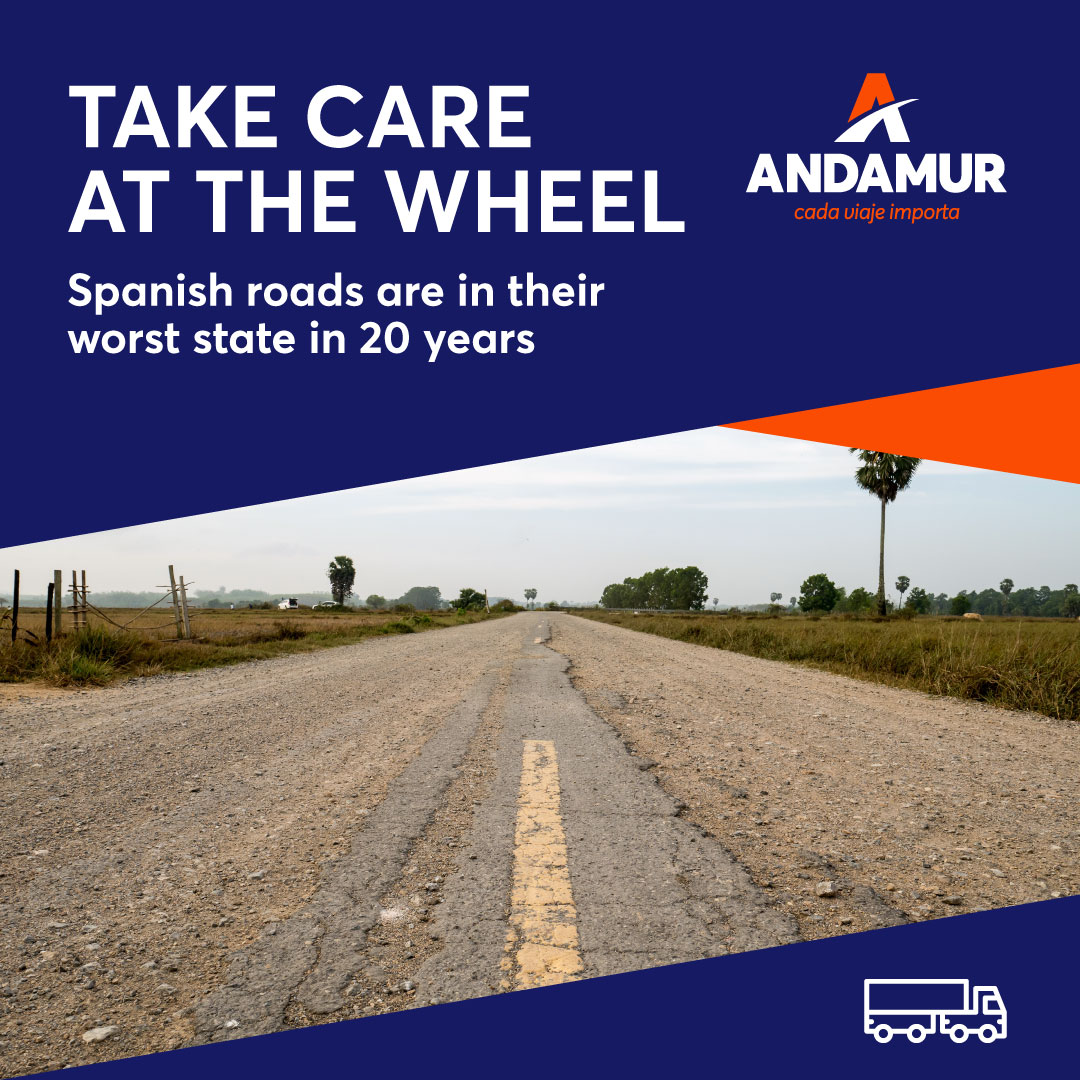
The Spanish Highways Association (AEC), which assesses the state of Spain’s road infrastructure every two years, has concluded that there is a deficit in the investment needed to maintain the roads. Investment has fallen 5.7% in two years. This deficit affects both state-maintained roads and those managed by Spain’s autonomous communities and provinces.
According to the AEC’s report, around 7.5 billion euros are needed to fix all the roads that have been affected by the fall in investment.
From 2009 to 2019, the network run by the Spanish Transport Ministry has seen its resources allocated for road maintenance and safety reduced by 76%.
It’s because of this that, of the 100,000 kilometres of road assessed by the AEC, 10,000 kilometres – or 1 in every 10 km – are exhibiting serious deterioration. The most common types of damage are edge cracking, deformation, wide fissures, rutting, disintegration and erratic cracking. This deterioration can be found on more than 50% of the road surface and they affect comfort, efficiency and safety on the road.
The study shows that as well as the damage to the roads that needs repairing, there are also 370,000 road traffic signs requiring renovation (over 70% with out-of-date reflective material) and markings that require repainting on 38,000 km of road.
However, it’s not all bad news. Barriers and bollards have been maintained or improved since the previous assessment.
The AEC has indicated that the roads received their worst score in 2020 years, with their condition rated as “deficient”.
To improve the state of the roads, the Spanish Highways Association proposes a funding model for road infrastructure based on three sources: public budgets, European funding and toll collection.



